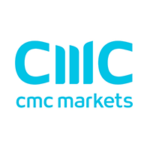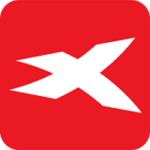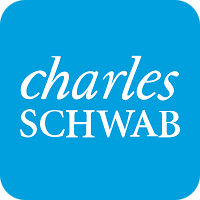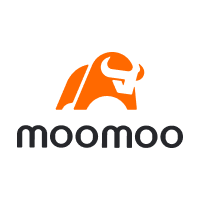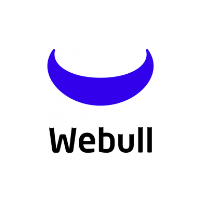Best CFD Brokers 2025
Over 35% of retail traders worldwide now use CFDs to access markets such as stocks, forex, indices, and commodities without actually owning the underlying assets.
The appeal is clear: CFDs let you trade rising or falling prices, use leverage to amplify gains, and diversify across markets from a single account.
But here’s the catch, not all CFD brokers are built for trust or transparency. Choosing the wrong one can mean high hidden fees, risky leverage terms, or even unregulated platforms holding your money. That’s why we’ve tested and ranked the best CFD brokers this year, so you can trade more safely.
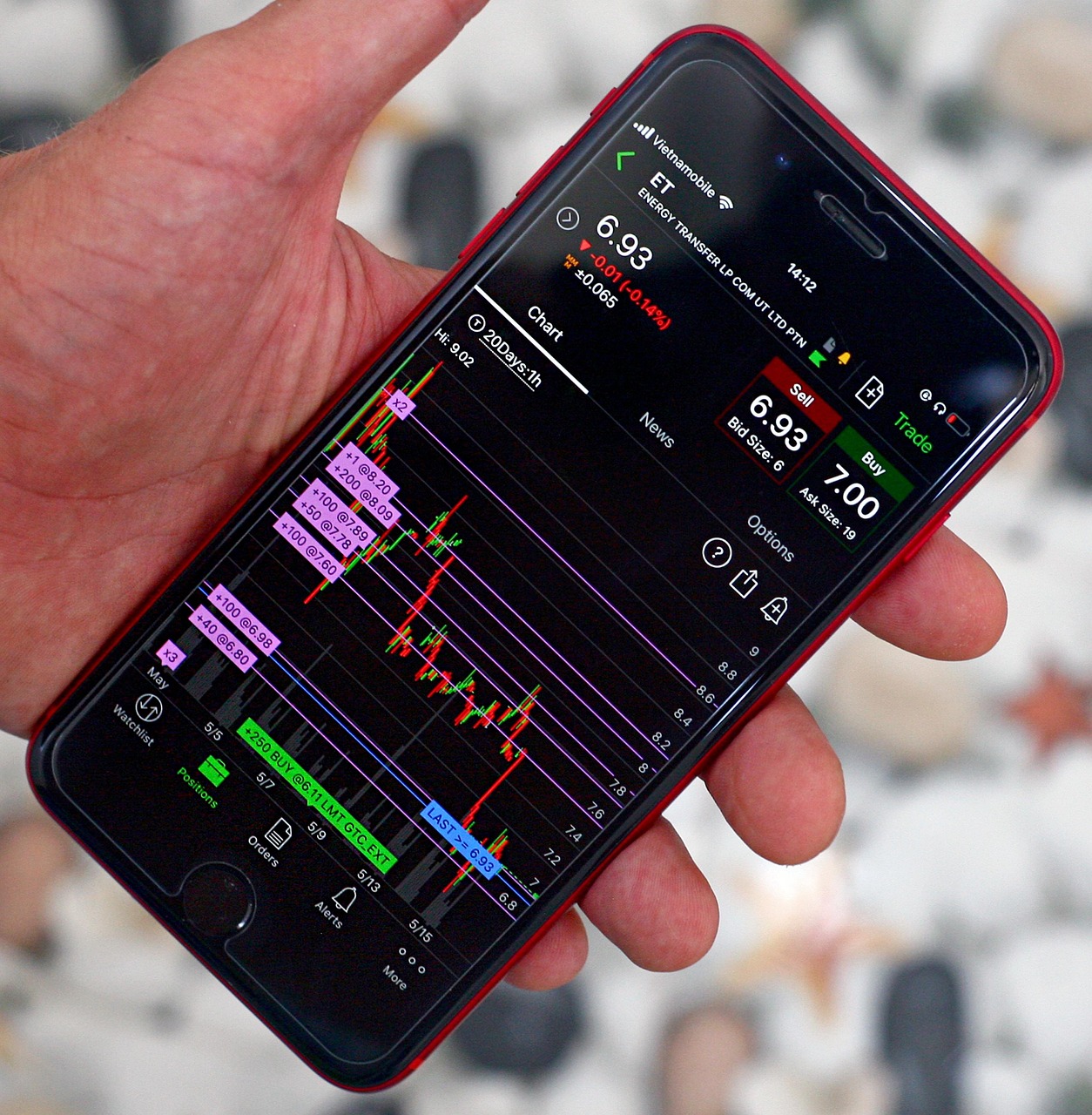
Top 10 Best CFD Brokers in 2025
The CFD market is booming in 2025, attracting traders who want fast access to global assets without owning them outright. With CFDs, you can trade everything from U.S. tech stocks to gold and major currency pairs—all from a single account.
But here’s the challenge: not every broker offers the same level of transparency, regulation, or fair pricing. Some hide high overnight financing costs, while others struggle with platform reliability when markets move quickly. To cut through the noise, we’ve identified the top 10 CFD brokers this year, ranked by fees, safety, product range, and overall trading experience.

Interactive Brokers
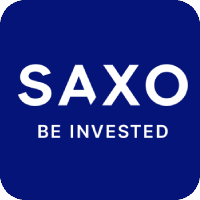
Saxo
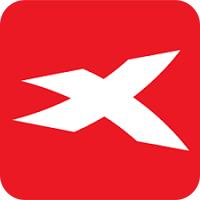
XTB
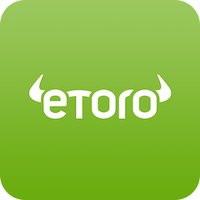
eToro

IG
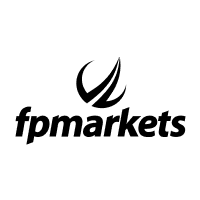
FP Markets
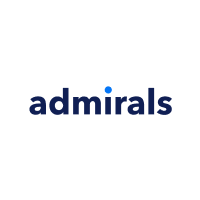
Admirals
Pepperstone

Tickmill
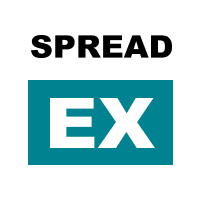
Spreadex
Key Takeaways



From premium platforms like Saxo and Interactive Brokers to low-cost providers like FP Markets, Pepperstone, and Tickmill, each broker has its niche. eToro and XTB cater to ease-of-use and beginners, while IG and Spreadex bring legacy and unique offerings. Choosing the right broker depends on whether you value cost efficiency, platform sophistication, or community-driven trading.
Top Brokers Key Features

In this section, we break down the essential data points that matter most: our exclusive in-house ratings based on hands-on testing, the minimum deposit required to open an account, and the average account approval time, as determined from thousands of real applications. This way, you’ll know not only who ranks highest in performance but also how accessible each broker is for traders at different levels.
| Broker | Overall Rating | Minimum Deposit | Account Opening Time |
|---|---|---|---|
| Interactive Brokers | 4.9/5 | $0 | 1-3 days |
| Saxo | 4.8/5 | $0 | 2 days |
| XTB | 4.8/5 | $0 | 1 day |
| eToro | 4.7/5 | $50 | 1 day |
| IG | 4.6/5 | $0 | 1-3 days |
| FP Markets | 4.6/5 | $50 | 1 day |
| Admirals | 4.5/5 | $100 | 1 day |
| Pepperstone | 4.4/5 | $0 | 1 day |
| Tickmill | 4.4/5 | $100 | 1 day |
| Spreadex | 4.3/5 | $0 | 1-3 days |
How to Choose a CFD Broker
Picking the right CFD broker can feel overwhelming, but it doesn’t have to be. Think of it like choosing a long-term business partner, you want someone reliable, transparent, and aligned with your goals. Here are the things that matter most:
Pro tip: The best CFD broker is the one that makes you feel confident, not confused. Secure, affordable, and easy to use—that’s the mix you’re aiming for.
Broker Guide
Critical Pitfalls to Avoid
CFD trading comes with opportunities but also traps that can drain your account faster than you realize. Here’s what to watch out for:
- Unregulated brokers – If a broker can’t prove they’re licensed by a top regulator, walk away. No exceptions.
- Hidden fees – Low spreads can look attractive, but check the fine print. High overnight financing charges or costly withdrawals can quietly erode profits.
- Overleveraging – Just because a broker offers 1:500 leverage doesn’t mean you should use it. Leverage magnifies both gains and losses, and too much can wipe out your capital.
- Sluggish platforms – A slow or glitchy trading platform can cost you real money. Execution delays during volatile markets are a red flag.
- Overpromises – Be wary of brokers or affiliates who “guarantee profits” or promise easy money. Trading CFDs is high-risk—anyone saying otherwise is selling hype.
A trusted broker should feel boring in the best way, regulated, transparent, and efficient. If something feels off, it usually is.
Online Brokers - Users Data
Expert reviews can highlight the numbers, but nothing beats the voice of traders who actually use these platforms every day. That’s why we’ve tapped into our extensive user database to share firsthand insights, covering fees, platform stability, mobile apps, and overall satisfaction.
These ratings don’t come from glossy marketing brochures; they come from real investors who have gone through the full journey—signing up, funding accounts, placing trades, and even testing withdrawals and customer support.









Fee Comparison
When trading CFDs, every pip and percentage point matters. Hidden costs can quietly eat into your profits, so understanding exactly what you’ll pay is non-negotiable. To make things clear, we’ve broken down spreads, commissions, and overnight financing fees for our top brokers, giving you a transparent view of how much each trade could cost.
This side-by-side data lets you spot which platforms offer the most cost-effective trading conditions—so you can keep more of your gains instead of handing them over in fees.
| Broker | Avg Spread (EUR/USD) | Commission (per lot) | Overnight Fees |
|---|---|---|---|
| Interactive Brokers | 0.1 - 0.3 pips | $2 - $5 | Varies by asset |
| Saxo | 0.6 pips | $3 - $4 | Competitive |
| XTB | 0.8 - 1.0 pips | Commission-free | Moderate |
| eToro | 1.0 pips | Commission-free | Higher than average |
| IG | 0.6 - 0.8 pips | Commission-free | Competitive |
| FP Markets | 0.0 - 0.2 pips (Raw) | $3 per lot (Raw) | Competitive |
| Admirals | 0.5 - 0.8 pips | $3 - $4 | Standard |
| Pepperstone | 0.0 - 0.3 pips (Raw) | $3.5 per lot (Raw) | Competitive |
| Tickmill | 0.0 - 0.2 pips (Pro) | $2 per lot (Pro) | Competitive |
| Spreadex | 0.9 - 1.2 pips | Commission-free | Varies |
Non-Trading Fees
Trading isn’t the only way brokers make money; sometimes, the real costs hide in the background. Non-trading fees include account maintenance charges, deposit or withdrawal costs, and the notorious inactivity fee that can slowly drain your balance if you stop trading for a while.
While many top brokers now offer free deposits and withdrawals, others may charge depending on the payment method or currency conversion. Inactivity fees are another common trap: leave your account untouched for a few months, and you could be hit with $10–$15 per month until you return. These fees might seem small, but over time they add up—especially for long-term or casual traders.
Always read the fine print. A broker with rock-bottom trading spreads but high non-trading fees could end up costing you more in the long run.
| Broker | Account Fee | Inactivity Fee | Withdrawal Fee | Deposit Fee |
|---|---|---|---|---|
| Interactive Brokers | $0 | $0 | ||
| Saxo | $0 | $0 | ||
| XTB | $0 | $0 | ||
| eToro | $5 | $0 | ||
| IG | $0 | $0 | ||
| FP Markets | $0 | $0 | ||
| Admirals | $0 | $0 | ||
| Pepperstone | $0 | $0 | ||
| Tickmill | $0 | $0 | ||
| Spreadex | $0 | $0 |
- Many leading brokers now offer free deposits and withdrawals, but hidden costs may still appear with certain payment methods or currency conversions.
- Inactivity fees are the biggest risk for casual traders, often ranging from $10–$15 per month if you don’t trade for a set period.
- Account maintenance fees are rare among top-tier brokers, but some smaller firms still charge them.
- Low spreads and commissions don’t always mean cheaper trading—non-trading fees can quietly eat into profits if ignored.
- Check the fee schedule upfront to avoid surprises and make sure the broker aligns with your trading frequency and style.
Always check the fine print on non-trading fees before committing to a broker. A platform that looks cheap upfront can cost you far more in hidden charges over time.
Regulations and Safety Measures
The difference between a regulated and an unregulated broker could mean the security of your funds, the fairness of your trades, and your ability to withdraw profits without delays. Below, we break down the critical elements every trader should evaluate.
Global Regulatory Authorities
Top-tier regulators such as the U.S. SEC and CFTC, the UK’s FCA, ASIC in Australia, and CySEC in Europe set the gold standard for financial oversight. A broker licensed by one or more of these authorities must adhere to strict rules, including transparency in operations and fair treatment of clients.
Client Fund Protection
Trustworthy brokers separate client funds from company accounts—a practice known as segregated accounts. This ensures that your money is not used for company expenses or risky investments, and remains safe even if the broker faces financial difficulties.
Negative Balance Protection
Volatile markets can sometimes move faster than stop-loss orders. Brokers offering negative balance protection guarantee that you’ll never lose more than your account balance, protecting you from debt or unexpected liabilities.
Investor Compensation Schemes
Many regulated brokers participate in compensation funds that reimburse traders if the broker becomes insolvent. For example, under the FCA’s Financial Services Compensation Scheme (FSCS), clients may be covered up to £85,000.
Data Security and Reliability
Modern brokers invest heavily in encryption protocols, two-factor authentication (2FA), and secure servers to safeguard your trading data and funds. Beyond regulations, a broker’s track record of uptime and reliability is just as important for consistent trading access.
Pro tip: Regulation is your first and strongest line of defense in trading. Always verify a broker’s license before opening an account, and prioritize platforms that combine tier-1 regulatory oversight, client fund protection, and strong security infrastructure. The safer the broker, the more confidence you’ll have in focusing on your trades—not your broker’s trustworthiness.
How to Verify a Broker’s Regulation in 1 Minute
Checking if a broker is truly regulated doesn’t need hours of research—you can confirm it in just one minute by following these quick steps:
☑️ Go to the Broker’s Website
Scroll to the footer section of the broker’s homepage. Legitimate brokers display their regulatory license number and the authority that issued it (e.g., FCA, ASIC, CySEC).
☑️ Copy the License Number
Write down or copy the registration/license number exactly as it appears.
☑️ Visit the Regulator’s Official Register
Go directly to the regulator’s database (e.g., FCA Register, ASIC Connect, CySEC Register) and enter the license number.
☑️ Match the Details
Check that the company name, website, and registered address in the regulator’s database exactly match what’s listed on the broker’s site. If anything doesn’t line up, that’s a red flag.
Done. In under a minute, you’ll know whether a broker is properly regulated or just claiming to be.
Comparing the Best CFD Brokers
Small details can make a big difference, especially when it comes to minimum deposits, trading fees, and CFD costs. To save you hours of digging, we’ve pulled together quick, side-by-side snapshots of the top brokers in 2025. This section lets you see at a glance how each platform stacks up, so you can focus on the numbers that matter most to your trading bottom line.

Interactive Brokers
Best for advanced CFD traders who need institutional-grade research and ultra-tight spreads. With access to over 150 global markets, traders can diversify across equities, forex, indices, and commodities from a single account. Its Trader Workstation platform is unmatched for charting depth and execution reliability.
| Interactive Brokers Overview | Interactive Brokers Data |
|---|---|
| Minimum Deposit | $0 |
| Deposit Method | Bank Transfer |
| Withdrawal Method | Bank Transfer |
| Withdrawal Fee | $0 |
| Account Opening Time | 1-3 Days |
| Inactivity Fee | |
| Review | Read Here |

Saxo
Best for professionals who want premium CFD trading with deep liquidity and advanced analytics. Saxo offers one of the broadest product ranges, including niche CFDs on bonds and ETFs, supported by world-class research. While the minimum deposit is higher, the security of a fully licensed European bank sets it apart.
| Interactive Brokers Overview | Interactive Brokers Data |
|---|---|
| Minimum Deposit | $5000 - $10,000 |
| Deposit Method | Bank Transfer, Credit Cards and Debit Cards |
| Withdrawal Method | Bank Transfer |
| Withdrawal Fee | $0 |
| Account Opening Time | 1 Day |
| Inactivity Fee | |
| Review | Read Here |

XTB
Best for traders seeking a balance of low costs and user-friendly technology. Its xStation 5 platform combines intuitive navigation with powerful charting tools, making it popular for both beginners and seasoned traders. With zero-commission stock CFDs and transparent spreads, it’s a strong choice for cost-conscious investors.
| Interactive Brokers Overview | Interactive Brokers Data |
|---|---|
| Minimum Deposit | $0 |
| Deposit Method | Bank Transfer, Credit Cards, Debit Cards, PayPal, Paysafe, Skrill, PayU, Ecommpay |
| Withdrawal Method | Bank Transfer |
| Withdrawal Fee | $0 |
| Account Opening Time | 1 Day |
| Inactivity Fee | |
| Review | Read Here |

eToro
Best for those who want to combine CFD trading with social investing. Its CopyTrader feature lets users mirror top-performing traders, creating a unique learning curve for beginners. With seamless mobile usability and support for multiple payment methods, it’s one of the most widely recognized brokers globally.
| Interactive Brokers Overview | Interactive Brokers Data |
|---|---|
| Minimum Deposit | $50 |
| Deposit Method | Bank Transfer, Credit and Debit Cards, eToro Money, Neteller, Skrill, Klarna, Giropay, Trustly, iDEAL, RapidTransfer, Przelewy 24 |
| Withdrawal Method | Bank Transfer, Credit and Debit Cards, eToro Money, Neteller, Skrill, Klarna, Giropay, Trustly, iDEAL, RapidTransfer, Przelewy 24 |
| Withdrawal Fee | $5 |
| Account Opening Time | 1 Day |
| Inactivity Fee | |
| Review | Read Here |

IG
Best for reliability and access to thousands of CFDs backed by decades of reputation. IG’s platforms deliver professional-grade execution, advanced charting, and integrated news flow for active traders. The broker’s global regulatory footprint and long track record make it one of the most trusted names in the industry.
| Interactive Brokers Overview | Interactive Brokers Data |
|---|---|
| Minimum Deposit | $0 |
| Deposit Method | Bank Transfer, Credit Card, Debit Card, HK FPS, Wise |
| Withdrawal Method | Bank Transfer |
| Withdrawal Fee | $0 |
| Account Opening Time | 1-3 Days |
| Inactivity Fee | |
| Review | Read Here |

FP Markets
Best for traders focused on razor-thin forex and CFD spreads. Known for its fast execution speeds and ECN pricing model, FP Markets is a top choice for scalpers and algorithmic traders. The availability of MetaTrader 4, MetaTrader 5, and IRESS ensures flexibility across trading styles.
| Interactive Brokers Overview | Interactive Brokers Data |
|---|---|
| Minimum Deposit | $50 |
| Deposit Method | Bank Transfer, Credit Cards, Debit Cards, PayPal, Skrill, Neteller |
| Withdrawal Method | Bank Transfer, Credit Cards, Debit Cards, PayPal, Skrill, Neteller |
| Withdrawal Fee | $0 |
| Account Opening Time | 1 Day |
| Inactivity Fee | |
| Review | Read Here |

Admirals
Best for those who want an all-in-one CFD broker with strong education and research support. Admirals integrates Trading Central tools, webinars, and market analysis directly into its platform suite. With competitive non-trading fees and a global reputation, it balances affordability with quality service.
| Interactive Brokers Overview | Interactive Brokers Data |
|---|---|
| Minimum Deposit | $100 |
| Deposit Method | Bank Transfer, Debit Card, Credit Card, Skrill, Neteller, Crypto |
| Withdrawal Method | Bank Transfer, Debit Card, Skrill, Neteller, Crypto |
| Withdrawal Fee | $0 |
| Account Opening Time | 1 Day |
| Inactivity Fee | |
| Review | Read Here |

Pepperstone
Best for CFD traders who prioritize speed and flexibility. With execution speeds under 30ms and access to platforms like MT4, MT5, and cTrader, Pepperstone is a favorite among algorithmic and high-frequency traders. Its low commissions and tight spreads make it highly competitive in the CFD space.
| Interactive Brokers Overview | Interactive Brokers Data |
|---|---|
| Minimum Deposit | $0 |
| Deposit Method | Bank Transfer, Credit Cards, Debit Cards, POLi, BPay, PayPal, Neteller, Skrill, Union Pay, MPESA+FaceID |
| Withdrawal Method | Bank Transfer, Credit Cards, Debit Cards, POLi, BPay, PayPal, Neteller, Skrill, Union Pay, MPESA+FaceID |
| Withdrawal Fee | $0 |
| Account Opening Time | 1 Day |
| Inactivity Fee | |
| Review | Read Here |

Tickmill
Best for low-cost CFD trading with one of the most competitive fee structures in the market. Tickmill is especially popular for forex CFDs, offering raw spreads from 0.0 pips and industry-low commissions. The broker is also known for quick withdrawals and a straightforward account setup process.
| Interactive Brokers Overview | Interactive Brokers Data |
|---|---|
| Minimum Deposit | $100 |
| Deposit Method | Bank Transfer, Credit Cards, Debit Cards, Neteller, Skrill, Crypto Payments, Sticpay, Fasapay, UnionPay, WebMoney |
| Withdrawal Method | Bank Transfer, Credit Cards, Debit Cards, Neteller, Skrill, Crypto Payments, Sticpay, Fasapay, UnionPay, WebMoney |
| Withdrawal Fee | $0 |
| Account Opening Time | 1 Day |
| Inactivity Fee | |
| Review | Read Here |

Spreadex
Best for traders who want the flexibility of both CFD and spread betting under one roof. Spreadex provides a simple web platform with tax-efficient options for UK clients and competitive spreads across indices and equities. Its long-standing presence and tailored approach make it stand out in the UK market.
| Interactive Brokers Overview | Interactive Brokers Data |
|---|---|
| Minimum Deposit | $0 |
| Deposit Method | Bank Transfer, Credit Cards, Debit Cards |
| Withdrawal Method | Bank Transfer, Credit Cards, Debit Cards |
| Withdrawal Fee | $0 |
| Account Opening Time | 1-3 Days |
| Inactivity Fee | |
| Review | Read Here |
Key Takeaways
- Interactive Brokers delivers unmatched research depth and institutional-level reliability.
- eToro stands out for beginner-friendly social trading features.
- Pepperstone is a top pick for tight spreads and fast execution.
- IG remains a global leader with access to thousands of markets.
- XTB balances low costs with excellent education and tools.
These brokers lead for their unique strengths—whether you value cost-efficiency, advanced platforms, or beginner support, there’s an option to fit your style.
Why Trust Broker Guide?
When it comes to choosing a stock broker, trust matters. At BrokerGuide, we follow a rigorous, step-by-step process to ensure our reviews are accurate, unbiased, and practical.
Rigorous Review Process
Every broker we recommend goes through a 50+ point evaluation, covering fees, platforms, safety, and customer support.
Verified Regulation
We conduct independent regulatory checks to ensure brokers meet strict global standards.
Real Trader Insights
Our ratings are enhanced with feedback from thousands of actual users, reflecting real-world trading experiences.
100% Independent
No broker can pay to influence our rankings—our research is transparent and data-driven.
When you choose a broker through BrokerGuide, you’re backed by unbiased research, verified regulation, and the experiences of real traders—so you can trade with confidence.
Broker Guide Tweet
How We Score Brokers
We believe rankings are meaningless without transparency. Our scoring system, refined 10,000+ hours of testing, evaluates brokers against 106 objective criteria, grouped into 5 weighted pillars. Each pillar reflects what actual traders prioritize, based on surveys of 20,000+ readers and market gap analyses. Here’s how we turn raw data into actionable insights:
1. Fees & Costs (30%)
Low commissions mean little if hidden fees erode returns.
☑️ We tracked 500+ live trades to measure spread consistency (e.g., Pepperstone’s EUR/USD vs. IG’s).
☑️ Audited non-trading fees such as inactivity penalties, withdrawal costs (eToro’s $5 fee), currency conversions (Oanda’s 0.9% markup).
☑️ Modelled long-term costs. Compared $10,000 portfolio scenarios (e.g., Schwab’s $0 equity fees vs. XTB’s CFD financing charges).
2. Safety & Regulation (25%)
Your capital’s security is non-negotiable.
☑️ Verified licenses with regulators (e.g., FINRA ID 36408 for Interactive Brokers).
☑️ Confirmed fund segregation via bank statements (e.g., Fidelity’s JPMorgan Chase accounts).
☑️ Stress-tested encryption. Attempted breaches on dummy accounts (256-bit SSL minimum).
☑️ Tracked compensation schemes. SIPC ($500k) vs. FSCS (£85k) vs. ASIC’s requirements.
3. Tools & User Experience (20%)
Clunky tools cost time and opportunities.
☑️ We measured platform stability during volatility (e.g., thinkorswim’s crash rate vs. Trading 212’s).
☑️ Rated mobile apps (iOS/Android) for speed, biometric security, and order-fill latency.
☑️ Audited advanced features: Backtesting capacity (SaxoTraderPRO), API reliability (Oanda), AI charting (IG’s ProRealTime).
4. Asset Diversity (15%)
Diversification shouldn’t require 5 brokers.
☑️ Mapped instrument coverage. Stocks (Schwab), forex (Pepperstone), crypto (eToro), bonds (Fidelity).
☑️ Verified market access. Pre-market hours (IBKR), weekend indices (IG), global exchanges (Saxo).
☑️ Checked fractional share support (Trading 212) and micro-lot trading (Oanda).
5. Support & Reliability (10%)
When markets move, slow support loses money.
☑️ Timed response rates. 24/7 chat (Pepperstone: 28s avg), phone (Schwab: 2m 14s), email (XTB: 6h).
☑️ Submitted complex queries. Tax docs (Fidelity), margin errors (IBKR), withdrawal disputes (eToro).
☑️ Monitored outage frequency during earnings/NFP events.
FAQ
What’s the easiest CFD broker for beginners to start with?
Brokers with simple platforms, low minimum deposits, and lots of educational tools (like eToro or XTB) are often best for beginners.
How much money do I really need to start trading CFDs?
Some brokers let you open an account with as little as $0–$100, but having at least $500–$1,000 gives you more flexibility and risk control.
Are CFD brokers safe for small investors?
Yes, if they’re regulated by top-tier authorities like FCA, ASIC, or CySEC. The regulation protects your funds, no matter your account size.
Which broker is better for very active traders?
Active traders should look for ultra-low spreads, tight commissions, and fast execution speeds, brokers like Interactive Brokers, IG, and Pepperstone stand out here.
Do CFD brokers charge extra when I don’t trade?
Yes, some brokers apply an inactivity fee if your account stays idle for a set period (often 6–12 months). Always check non-trading fees before signing up.
What are overnight financing fees in CFDs?
Overnight fees (also called swap rates) are interest charges applied when you hold positions past market close. They vary by broker and asset.
How fast can I deposit or withdraw money from my account?
Deposits are usually instant with cards or e-wallets, while withdrawals can take 1–3 business days depending on the broker and payment method.
Which brokers have the best mobile apps for CFD trading?
Top mobile apps offer fast order execution, smooth charting, and integrated research—Saxo, IG, and XTB rank highly for mobile experience.
What’s the most important thing to check before choosing a CFD broker?
Always verify regulation, trading fees, platform reliability, and the available markets that match your strategy.
Can tech-savvy traders customize their CFD trading platform?
Yes, many brokers allow integrations with MetaTrader 4/5, advanced APIs, and custom indicators for algorithmic or automated trading.




